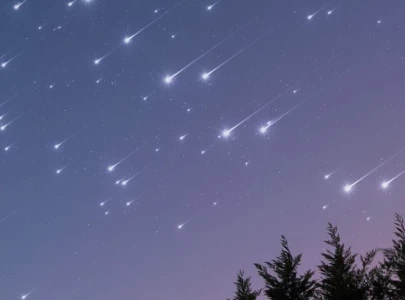

The Orionid meteor shower, known for its connection to Halley's Comet, is set to peak early Monday, providing an exciting opportunity for stargazers. However, the bright light of a waning moon may hinder visibility during this celestial event.
In 2024, the Orionids are expected to display their greatest number of meteors on the mornings of October 20 and 21, with October 21 potentially offering the richest viewing experience. The peak is predicted for 18:14 UTC on October 20, and observers should look for meteors after midnight through the early hours before dawn.
The Orionids, one of two annual meteor showers originating from Halley’s Comet, can be quite unpredictable. While some years resemble a fireworks display, others see a more subdued performance. NASA’s Bill Cooke notes that this highly variable shower can yield between 20 to 60 visible meteors per hour under ideal conditions. This year, peak activity will coincide with a waning moon that is 83% full, and the shower will continue until November 22.
Meteor showers occur annually and require no special equipment to view. They are typically the result of debris from comets, with the Orionids specifically originating from Halley's Comet. As space rocks enter Earth’s atmosphere, they heat up due to air resistance, creating glowing trails known as "shooting stars."
Cooke explains that Halley’s Comet does not consistently leave the same quantity of particles each year, making it challenging to predict the intensity of the display.
For optimal viewing, meteor showers are best seen between midnight and dawn, away from city lights. Clear skies without cloud cover enhance visibility, especially on nights when the moon is smaller. Additionally, minimizing distractions, like checking phones, can help preserve night vision.
October has been an exciting month for astronomical events, including a recent supermoon and the comet Tsuchinshan-Atlas. The next significant meteor shower is the Southern Taurid meteor shower, which peaks in early November. For updates on upcoming celestial events, enthusiasts can refer to the meteor society's list of large meteor showers, including peak viewing days and moonlight conditions.